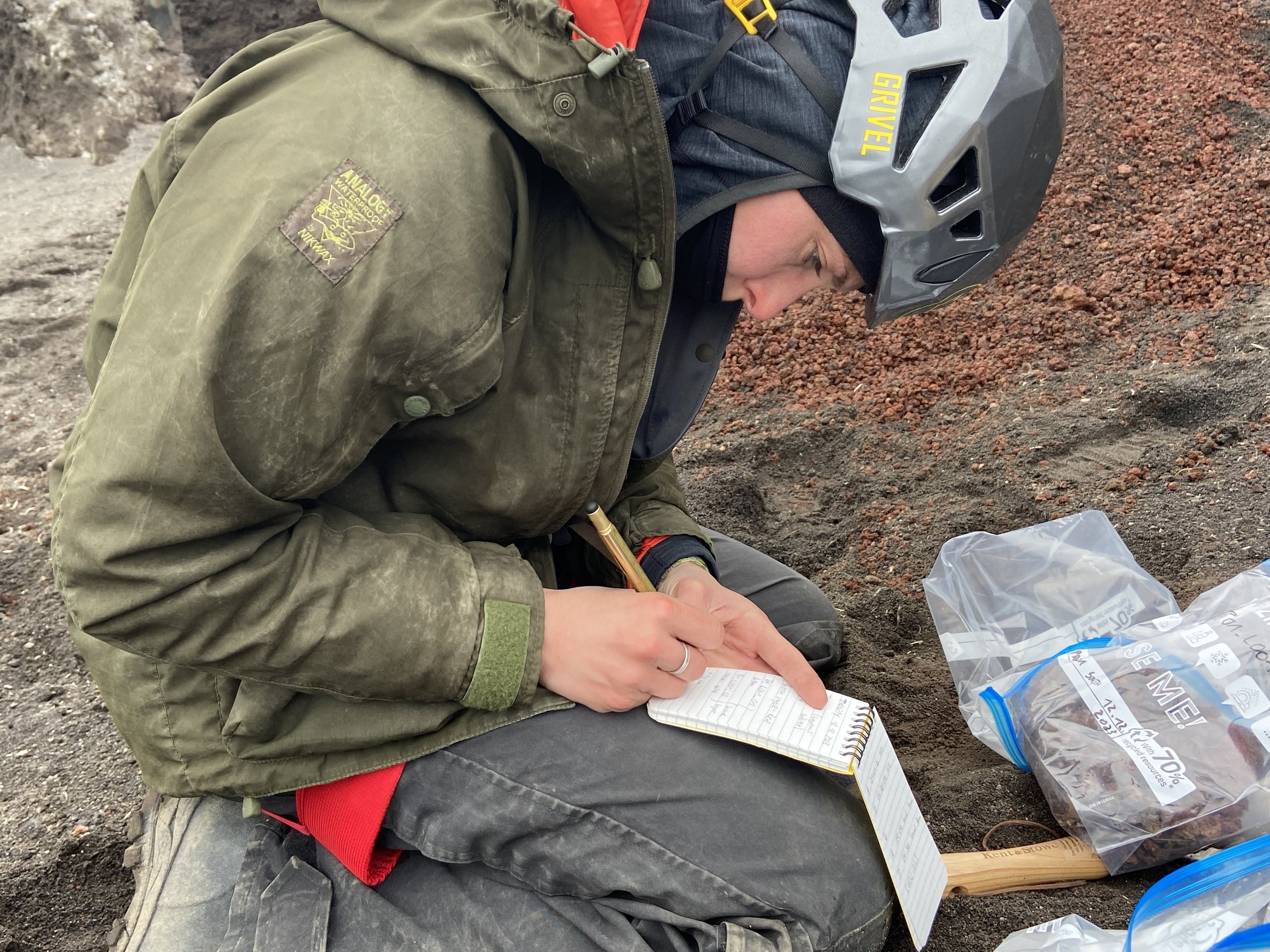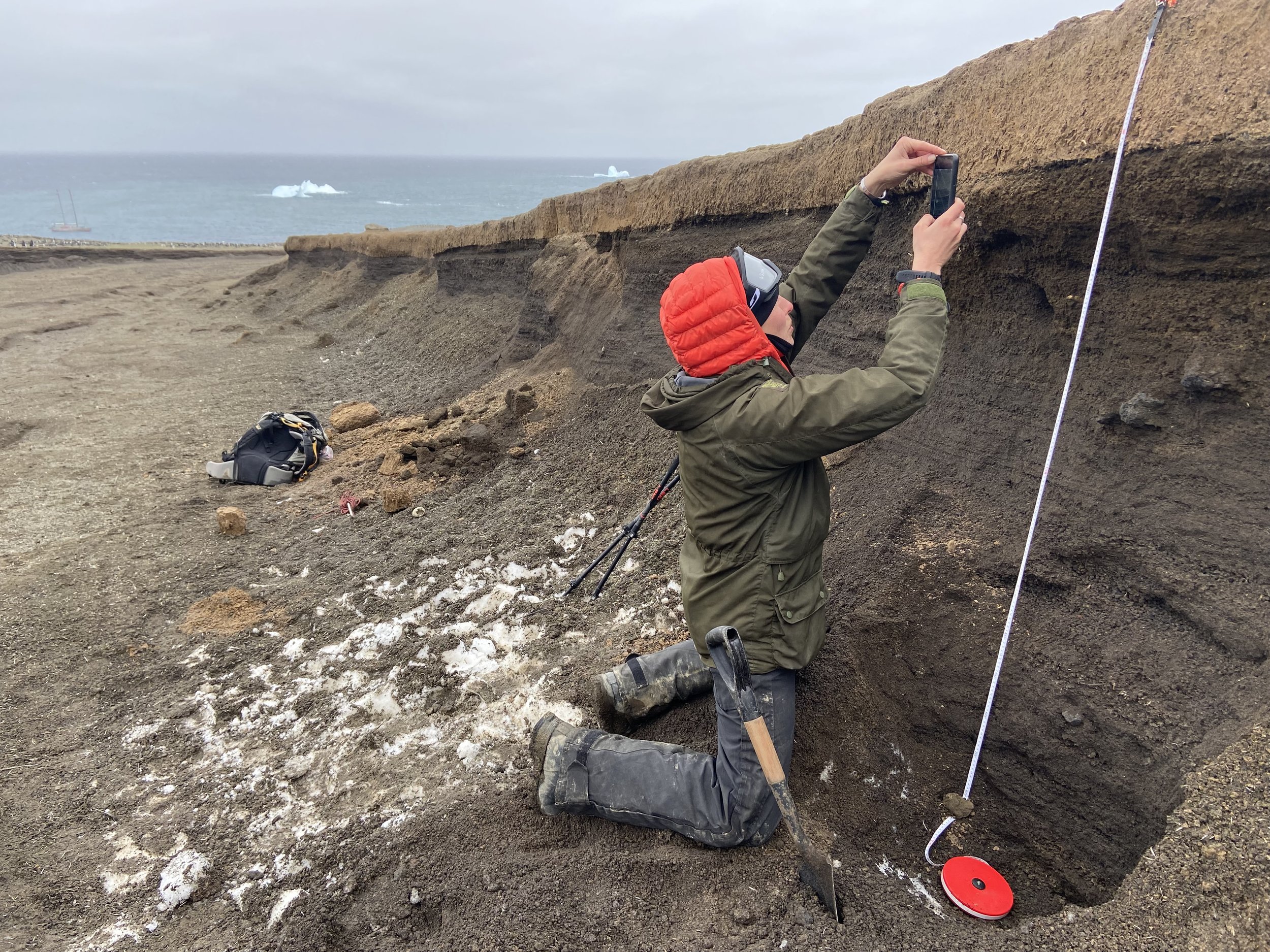Zavodovski Expedition. Under Harsh Conditions: An Attempt to Unearth Zavo's Eruptive History.
My blog entry from March 27, 2023, captures the sentiment: 'Oh, if this whole journey was a song, I would not tiredhitting repeat!' And much sooner than expected, we found ourselves playing this song again...
Our second expedition emerged as a comprehensive reality check, thoroughly scrutinizing the experiences gained from the initial journey. Despite generally more favourable weather and working conditions during our first venture in January, this second, more challenging endeavour underscored, more than any other aspect, the intrinsic value of the scientific data we aim to collect and bring back from this remote locale. Facing formidable logistical challenges, requiring meticulous preparation over many months, and finding ourselves at the mercy of higher powers, the realization dawned that every small piece of information we glean from this extraordinary environment will be unparalleled, truly unprecedented, and immensely valuable.
Logging the strata sample
As the volcanologist on board, my responsibility extends beyond keeping the expedition team alert and safe from a potential volcanic eruption. It also involves continuous exploration of the volcano and edifice architecture to enhance our understanding of sub-Antarctic volcanic systems and their impact on the surrounding environment.
For additional background information, the South Sandwich Arc in the Southern Ocean is situated on oceanic crust formed at the East Scotia Ridge. Therefore, these islands developed on ocean floor aged from about 10 million to 3 million years. With this, the island arc is relatively young on the geological time scale, and also compared to, for example, the Lesser Antilles. While the islands do not seem to have evolved in a strict chronological order, we can identify older and younger islands, with Zavodovski being one of the youngest (Baker and Hill, 1981; Baker, 1995; Larter et al., 2003). Mount Asphyxia (also referred to as Mount Curry), which comprises Zavodovski Island, remains one of the most remote active volcanic islands on Earth about which we still know almost nothing.
Measuring the layers for the buried penguin
Only a few volcanic eruptions have been reported in the past. The initial observed eruption or vapor emissions occurred in 1819 and were documented by the Russian explorer Bellinghausen. In 1830, a lava flow with 'pumiceous' characteristics was deposited on the eastern flank of the volcano according to Fanning (1834) and Holdgate & Baker (1979). On March 30, 2016, an eruption, characterized by ash-rich plumes and volcanic bombs, was reported and photographed by observers aboard a fishing vessel. Additionally, the event was captured by satellite.
Taking volcanic strata sample
If the maximum 10 million years of the volcano’s lifetime were compared to the 24 hours of a day, then the time since the first sighting of the island on January 21, 1819 (during the First Russian Antarctic Expedition led by Fabian Gottlieb von Bellingshausen and Mikhail Lazarev) only represents the last 0.522 seconds of the volcano's lifetime. Evidence from Earth observation satellites represents even less time, as optical and radar satellites have only been in space since 1972 and 1978, respectively.
Due to this fact, the rarity of visits to the island and the substantial cloud cover often obscuring optical satellite observations, we have reason to believe that we are missing out on most eruptions of this volcano, including some that occurred in recent history since the volcano’s discovery.
Ready for take off
The main scientific mission of my second visit, besides collecting drone footage to fill the small remaining gaps in the map produced during our first field survey, was therefore to systematically collect rock and ash samples to recover the volcano’s eruptive history, the part that is stored in layers of eruption deposits above sea level, that is. And therefore, I conducted sophisticated stratigraphic sampling. One special experiment included extracting the remnants of a penguin from an old ash layer, which should make it easier for us to find out the date of the eruption that killed this fellow.
Nicole and Skip, Team Volcano, zeroing in the GPS base station
Our endeavour leaves me hopeful for the prospect of more work down south. Meanwhile, I am looking forward now to computing and plotting survey results.
Postscript
We may not be conscious of it at every moment during an expedition like the one we just completed, but out there in the vast ocean, we are 10 small souls relying on each other, placing our trust in the hands of one another, especially the incredible VoA crew – a group of legends who embody professionalism and pure adventure. This, I believe, is a remarkable and mind-blowingly rare experience in our modern times.
An expedition of this nature erases the boundaries of strangers, revealing that, at the core, all we truly need are food, shelter, and companionship. In my world, nothing holds more meaning than genuine companionship, shared heartfelt laughter, and experiencing moments together where a simple look into each other’s eyes and a smile speaks volumes more than a thousand words.
Team Volcano and Team Moss preparing the buried penguin sample
I'm unsure how on Earth I deserve to be part of this, but what I do know is that I am ridiculously grateful, deep, deep down, far, far within. Once again, at a loss for better words, all of this will stay with me forever! Thank you and a heartfelt Mahalo, mates!
“The more one becomes familiar with such grandeur, the less one has to say about it, the less, in fact, one thinks about it. But it is there nevertheless, and has its effect upon the soul.”
Tom Price, Putting SG on the Map, by Alec Trendall.
Nicole Richter
Volcanologist








